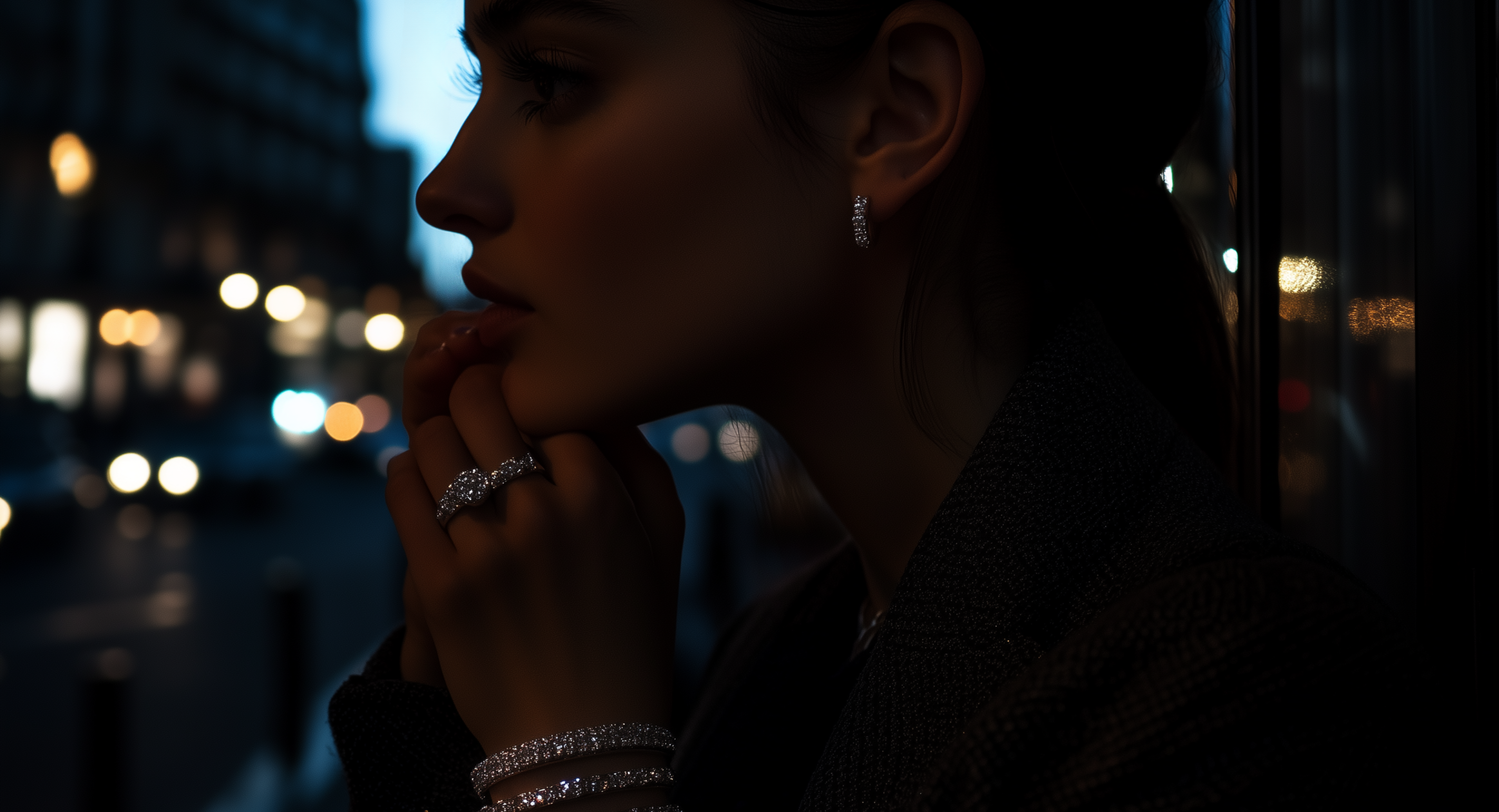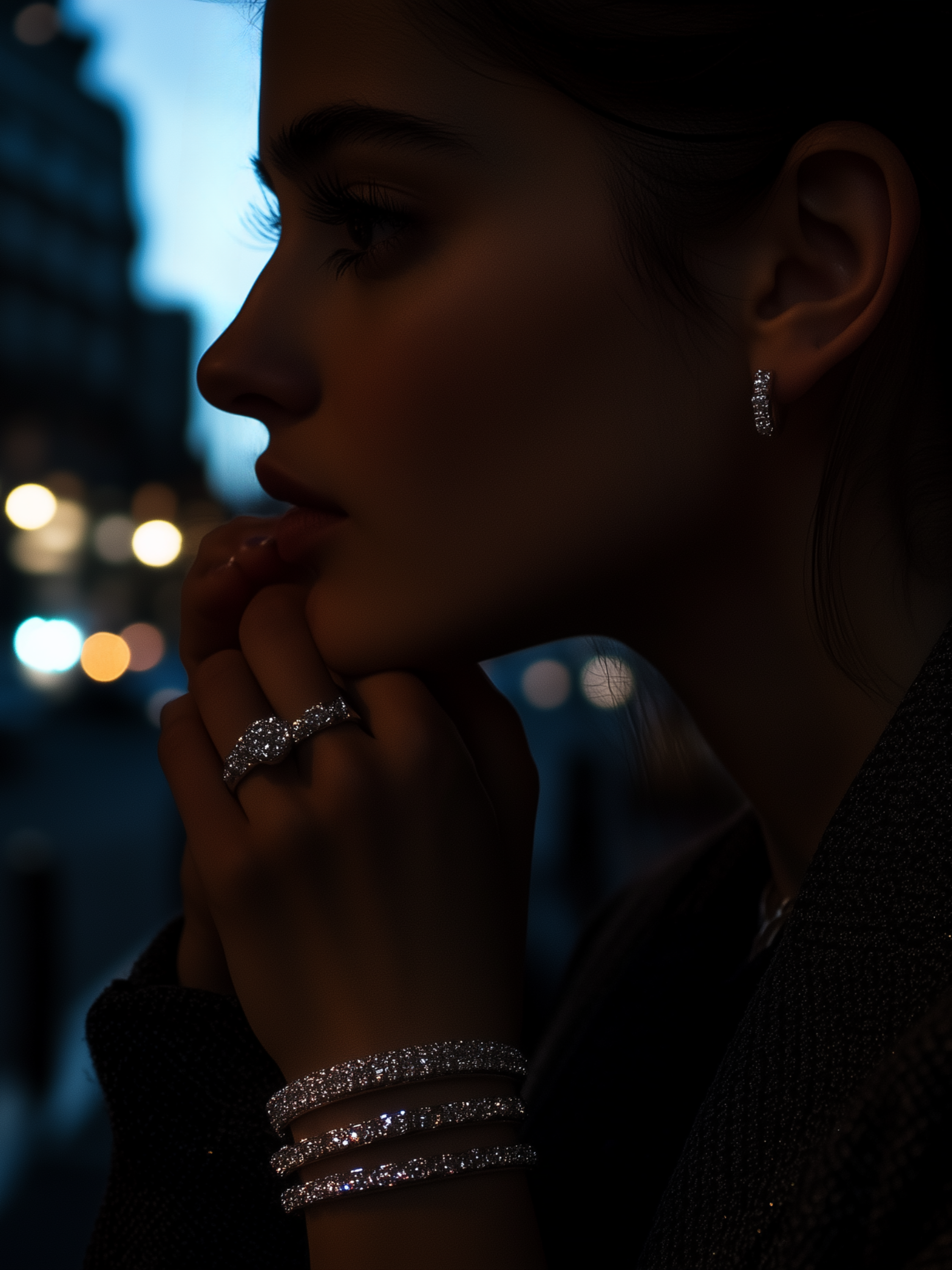Engagement Ring vs Wedding Ring: Understanding the Differences
When it comes to meaningful jewellery, few items are as iconic and symbolic as engagement rings and wedding rings. Both rings play crucial roles in a couple’s relationship, signifying love, commitment, and key milestones along their journey. However, the difference between engagement ring vs wedding ring goes beyond just the timing of when they are worn. Each ring carries its own unique meaning, tradition, and design, which reflect different stages in a relationship.
In this guide, we’ll explore the engagement vs wedding ring debate, examining their distinct purposes, how they are worn, and the design choices that set them apart.

What is an Engagement Ring?
The engagement ring holds a deep-rooted tradition that dates back centuries. The ancient Romans are believed to have been among the first to adopt the custom of giving engagement rings as a public pledge of marriage. This ring would symbolise the bond between two people about to embark on a lifelong journey together. Today, the engagement ring continues to represent love, commitment, and the promise of marriage.
When discussing engagement ring vs wedding ring, it's important to recognise that the engagement ring is often the first piece of jewellery exchanged between a couple. It is traditionally presented during a marriage proposal, signifying intent to marry and the beginning of the wedding planning process. In many cultures, the giving of an engagement ring is a highly anticipated moment, one that marks a turning point in the relationship.
Key Characteristics:
- Design: Engagement rings are typically known for their eye-catching designs. They often feature a prominent central stone, most commonly a diamond, though gemstones like sapphires, emeralds, and rubies have also become popular choices. The central stone can be showcased in various settings, such as the classic solitaire, the intricate halo, or the romantic three-stone style. Engagement rings are often designed to be striking and stand out, making them the focal point of a couple’s jewellery collection.
- Symbolism: The engagement ring holds a deep symbolic meaning, representing not only the love and dedication between two people but also their shared future. The single, central stone often represents the unique bond between the couple and their mutual commitment to the journey ahead. Whether the ring features a diamond, known for its strength and durability, or another gemstone, the symbolism remains strong—a lasting commitment that reflects the endurance of love.
- Timing: Engagement rings are typically given during a proposal, which is often one of the most memorable moments in a couple's relationship. From the moment the ring is placed on the recipient’s finger, it signals the start of a new chapter in their life together. The engagement ring sets the tone for the upcoming wedding and symbolises the couple's intent to exchange vows in the near future.

Blackthorn Diamond Engagement Ring
What is a Wedding Ring?
The wedding ring, often referred to as a wedding band, is one of the most enduring symbols of love and commitment. While the engagement ring vs wedding ring debate highlights their differences, both rings hold significant meaning in the progression of a relationship. The wedding ring, in particular, represents the formalisation of that commitment, exchanged during the marriage ceremony to solidify the bond between two people.
The tradition of exchanging wedding rings can be traced back thousands of years. Ancient Egyptians believed that the circular shape of the ring symbolises eternity, with no beginning and no end—an unbreakable promise of lasting love. This symbolism has carried through centuries, making the wedding ring one of the most universally recognised symbols of marriage.
Unlike engagement rings, which are typically elaborate and feature a central gemstone, wedding rings tend to be more understated. Their simplicity reflects the idea that the bond of marriage is strong, constant, and unadorned by superficial elements. However, there are still plenty of ways to personalise a wedding band, making it just as special and unique as an engagement ring.
Key Characteristics:
- Design: Wedding rings are traditionally plain, minimalist bands, though modern couples often add personal touches like small embedded diamonds, textured finishes, or meaningful engravings. The focus of a wedding ring’s design is on comfort and durability, as it’s meant for everyday wear. However, just because wedding bands are simpler in style does not mean they lack elegance. Many contemporary wedding rings include sleek, modern designs or delicate pavé-set diamonds to add sparkle without overwhelming the band.
- Symbolism: Exchanging wedding rings during the ceremony symbolises the formal commitment to a lifelong partnership. Wedding bands are typically worn every day as a reminder of the vows made and the eternal bond between spouses. The continuous, unbroken circle of the wedding band represents not only eternity but also the never-ending love and unity that the couple shares.
- Timing: In contrast to engagement rings, which are given during the proposal, wedding rings are exchanged at the wedding ceremony itself. This moment marks the official start of the marriage, with both partners wearing their wedding rings as a physical symbol of their new union. In some cultures, it is customary for the bride and groom to exchange identical wedding bands, while in others, the rings may differ in style.
Differences Between Engagement Rings and Wedding Rings
When considering the difference between engagement ring and wedding ring, it’s clear that both serve distinct purposes and are given at different points in a relationship. Here are the main distinctions between the two:
1. Purpose and Timing
- Engagement Rings: Engagement rings are typically presented during a proposal as a symbol of intent to marry. They mark the beginning of the couple’s journey toward the wedding.
- Wedding Rings: Wedding rings are exchanged during the ceremony, symbolising the formalisation of the marriage. They represent the enduring nature of the vows made during the wedding.

2. Design and Aesthetics
- Engagement Rings: Known for their standout designs, engagement rings usually feature a prominent centre stone and detailed settings. They are designed to catch the eye and often become a cherished piece of jewellery even after the wedding.
- Wedding Rings: Wedding bands, by contrast, are simpler in design. Their purpose is to complement the engagement ring without overshadowing it. Many couples opt for wedding bands that coordinate with the engagement ring, creating a cohesive look when worn together.
3. Wearing the Rings
- Engagement Rings: Typically worn on the fourth finger of the left hand, the engagement ring is often the first visible sign of a couple's commitment. It is worn leading up to the wedding day and beyond.
- Wedding Rings: After the wedding ceremony, the wedding ring is placed on the same finger, either worn alone or stacked with the engagement ring. Many couples choose to wear both rings together, creating a meaningful and symbolic combination that reflects their journey from engagement to marriage.
Tradition and Cultural Significance
The tradition of wearing engagement and wedding rings on the fourth finger of the left hand, commonly referred to as the “ring finger,” dates back to ancient times. The belief that a special vein, known as the "vena amoris" or "vein of love," runs directly from this finger to the heart has been a romantic notion that has influenced many cultures. This symbolic connection to the heart made it the ideal place for both the engagement ring vs wedding ring to be worn, representing the physical and emotional bond of love.
However, as with many traditions, this practice can vary greatly depending on the culture. For instance, in several European countries, such as Germany, Norway, and Russia, the engagement vs wedding ring is worn on the right hand rather than the left. While engagement rings are a staple in Western cultures, other parts of the world may prioritise the wedding ring more significantly, viewing it as the ultimate symbol of marital unity.
In Jewish weddings, the wedding ring is traditionally placed on the bride's right index finger during the ceremony, although many women later move it to the left hand. Some countries, such as Brazil and Spain, have customs where both engagement and wedding rings are worn on the right hand. These differences highlight the diversity in how various cultures interpret the difference between engagement ring and wedding ring traditions. Despite these variations, the universal significance of the wedding ring as a symbol of eternal love remains consistent across cultures, with its circular shape symbolising eternity and an unbroken bond.
How to Wear and Coordinate Both Rings
After the wedding ceremony, many couples choose to wear both their engagement ring vs wedding ring on the same finger. The key to achieving a harmonious look lies in how the rings are coordinated and worn together. Here are some tips to help ensure that both rings complement each other for a stylish and meaningful pairing:
1. Stacking the Rings
One of the most popular ways to wear both the engagement vs wedding ring is by stacking them on the same finger. Traditionally, the wedding ring is worn first, closest to the heart, with the engagement ring placed on top. To create a cohesive and stylish stack, it’s important to choose a wedding band that complements the engagement ring in terms of design. For example, if your engagement ring features a bold solitaire diamond, a simpler, understated wedding band—perhaps with small pavé diamonds or a plain metal design—will balance the look without overshadowing the engagement ring.

Stacking engagement and wedding rings for maximum statement
2. Mixing Metals
While tradition has often dictated that both rings should match in terms of metal choice, modern trends embrace mixing metals for a more personalised and contemporary look. Mixing rose gold with platinum or yellow gold with white gold has become a popular choice, adding dimension and creativity to the stack. The combination of different metal tones can help you reflect your individual style, allowing you to create a truly unique set of rings that stands out. When considering the difference between engagement ring and wedding ring design, don’t be afraid to mix metals for a fresh, modern take.
3. Matching Sets
For those who prefer a seamless and coordinated look, matching bridal sets are an ideal option. These sets include both the engagement ring and wedding ring designed to complement each other in terms of style, metal, and stone choice. Many jewellers offer sets that align perfectly in terms of stone size, ring profile, and overall aesthetic, ensuring that both rings fit together like puzzle pieces. Opting for a matching set eliminates the need to search for a separate wedding band, providing a ready-made combination that feels harmonious and well-thought-out.
Engagement Ring vs Wedding Ring: Final Thoughts
While engagement rings and wedding rings each carry their own symbolism and traditions, together they represent the full journey of love and commitment. Whether you prefer a coordinating set or enjoy mixing and matching metals and styles, both rings should reflect your personal taste and the bond you share with your partner.
Ultimately, there are no strict rules when it comes to choosing and wearing engagement and wedding rings. What matters most is that they hold meaning for you as a couple, serving as daily reminders of the love and promises you have made.



